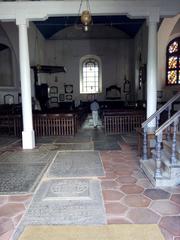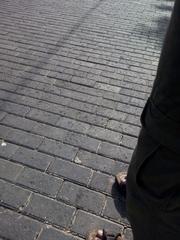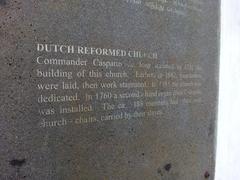
Galle Fort Visiting Guide: Tickets, Hours, and Attractions in Galle, Sri Lanka
Date: 14/06/2025
Introduction: Galle Fort’s History and Significance
Galle Fort, positioned on Sri Lanka’s southwestern coast, stands as a vibrant symbol of the island’s layered history, colonial encounters, and cultural diversity. Designated a UNESCO World Heritage Site in 1988, the fort encapsulates architectural influences from the Portuguese, Dutch, and British eras, all interwoven with South Asian traditions. Originally established as a Portuguese stronghold in the late 16th century, Galle Fort was later transformed by the Dutch into a formidable bastioned fortress and further modified under British rule. Today, its coral and granite ramparts, iconic Dutch Reformed Church, and active multicultural community make it a living heritage site. Visitors can explore cobblestone streets filled with art galleries, boutique shops, and vibrant eateries, all against the backdrop of the Indian Ocean. Whether you’re drawn by colonial architecture, maritime history, or contemporary culture, Galle Fort promises a memorable journey through Sri Lanka’s coastal heritage. For the latest details, consult the UNESCO World Heritage Centre and the Sri Lanka Tourism website.
Contents
- Introduction
- Early Origins and Strategic Importance
- Colonial Eras: Portuguese, Dutch, and British
- Architectural and Multicultural Heritage
- Visitor Information
- Visiting Hours
- Ticket Prices
- Accessibility
- Guided Tours & Special Events
- Nearby Attractions
- Essential Travel Tips
- Must-See Attractions
- Frequently Asked Questions (FAQ)
- Conclusion & Recommendations
- Reliable Sources & Further Reading
Early Origins and Strategic Importance
Galle’s natural harbor has linked Sri Lanka to global trade since at least the 6th century CE, with references in ancient texts such as the Cosmography of Cosmas Indicopleustes. Traders from Arabia, Persia, and China frequented this port, making it a hub long before European arrival (archaeology.lk).
Colonial Eras
Portuguese Foundation (16th Century)
The Portuguese, after being ousted from Colombo, established Galle as their southern stronghold in the late 1500s, building modest fortifications of earth and timber to protect the harbor from land attacks (archaeology.lk).
Dutch Expansion (17th–18th Centuries)
In 1640, the Dutch seized control and dramatically expanded the fort, enclosing the peninsula with stone walls and 14 bastions. They introduced a grid-like street plan, robust drainage systems, and constructed key landmarks such as the Dutch Reformed Church (1755) (whc.unesco.org; lankatravelism.com).
British Modifications (1796–1948)
The British captured Galle in 1796, making select upgrades such as the Galle Lighthouse and Clock Tower. The fort served as an administrative and military hub until Colombo’s rise in the late 19th century (archaeology.lk).
Architectural and Multicultural Heritage
Galle Fort is the best-preserved European-built fortified city in South Asia (worldheritagesites.net). Its coral-and-granite ramparts, Dutch grid street plan, and colonial mansions coexist with South Asian features like verandas and internal courtyards. The fort’s multicultural community—Sinhalese, Dutch Burghers, Moors, and others—contributes to a vibrant mix of religious buildings, festivals, and daily life (srilankanguide.lk).
Visitor Information
Visiting Hours
- Fort grounds: Open daily, generally from 7:00 AM to 7:00 PM. Some museums and churches have varying hours (typically 9:00 AM to 5:00 PM).
- Best times: Early mornings and late afternoons are ideal for pleasant weather and fewer crowds.
Ticket Prices
- Fort entry: Free.
- Museums/Attractions: Entry fees for sites like the Maritime Archaeology Museum or Dutch Reformed Church (LKR 200–500).
- Guided tours: Additional charges apply.
Accessibility
- Main streets are paved, but cobblestones and uneven surfaces present challenges for those with mobility issues. Some ramps and assistance are available, but wheelchair access is still limited in places.
Guided Tours & Special Events
- Local operators offer walking tours focused on history, architecture, or local culture.
- Annual events include the Galle Literary Festival and religious celebrations such as Vesak and Christmas (travelinplanet.com).
Nearby Attractions
- Unawatuna Beach: 5 km away, known for its golden sands and water sports.
- Japanese Peace Pagoda: Offers panoramic coastal views.
- Rumassala Sanctuary: A nature reserve ideal for hiking and birdwatching.
Essential Travel Tips
- Getting There: Easily accessible by train, bus, or car from Colombo (about 2 hours via the Southern Expressway).
- Getting Around: Explore on foot; tuk-tuks are available for short trips.
- What to Pack: Comfortable walking shoes, hat, sunscreen, water bottle, and cash in small denominations.
- Dress Code: Modest attire for religious sites; light clothing for the tropical climate.
- Local Etiquette: Remove shoes in temples and churches; ask before photographing people.
Must-See Attractions in Galle Fort
- Ramparts & Bastions: Walk the approximately 3 km of walls for ocean views, especially at sunrise or sunset (Wonders of Ceylon).
- Galle Lighthouse: Iconic photo spot; entry not permitted but the exterior is striking (Visit Sri Lanka AI).
- Dutch Reformed Church (1755): Historic architecture and tombstones (Laure Wanders).
- National Maritime Museum: Located in a Dutch warehouse, showcasing naval and marine history.
- Old Dutch Hospital: Now a shopping and dining precinct with colonial flair.
- All Saints’ Church: Victorian Gothic church with stained glass windows.
- Clock Tower: Built in 1883, a central landmark.
- Pedlar Street: Lined with boutiques, galleries, and cafes.
- Art Galleries: Sithuvili Gallery and others spotlight local talent (traveltriangle.com).
- Nearby Beaches: Small beach behind the lighthouse and Unawatuna Beach for water sports.
Frequently Asked Questions (FAQ)
Q: What are Galle Fort’s visiting hours?
A: The fort is open daily from 7:00 AM to 7:00 PM; museums and churches usually operate 9:00 AM–5:00 PM.
Q: Is there an entry fee for Galle Fort?
A: Entry is free; some attractions inside charge a small fee.
Q: How do I get to Galle Fort from Colombo?
A: By train, bus, or car via the Southern Expressway (about 2 hours).
Q: Is Galle Fort accessible for visitors with disabilities?
A: Accessibility is limited due to cobblestone streets; some sites provide assistance—contact venues in advance.
Q: Can I join guided tours?
A: Yes, local walking tours are available and recommended.
Conclusion & Recommendations
Galle Fort offers a unique experience where centuries-old ramparts, colonial architecture, and a thriving multicultural community come together. The fort is not just a preserved relic but a living heritage site, bustling with local life, art, and cuisine. To make the most of your visit, plan for early morning or late afternoon walks, explore museums and galleries, sample diverse cuisine, and consider joining a guided tour. For up-to-date information, curated audio guides, and interactive maps, download the Audiala app and consult official tourism sources. Embrace responsible tourism by supporting local businesses and respecting the fort’s heritage.
Reliable Sources & Further Reading
- Sri Lanka Archaeology: Galle Fort Visiting Hours, Tickets, and History
- Galle Fort Sri Lanka: Visiting Hours, Tickets, and Cultural Guide
- Wonders of Ceylon: Galle Fort Visitor Guide
- Nerd Nomads: Visitor Experience, Must-See Sites, and Practical Tips
- Holidify: Travel Guide to Galle
- Endless Distances: Things to Do in Galle
- UNESCO World Heritage Centre: Galle Fort
- Sri Lanka Tourism
Images and videos with descriptive alt-texts such as “Galle Fort ramparts at sunset,” “Dutch Reformed Church interior,” and “Artisan boutique inside Galle Fort” are recommended to enhance your experience.




